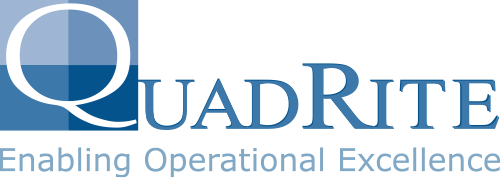In a record-breaking decade for scientific discovery, it’s no wonder the medical device industry is facing opportunities for unprecedented growth – if done right. Worth noting: The era of growth and innovation is teeming with pitfalls and roadblocks. However, if you know what to look for and how to fix mistakes should they occur – the opportunities are endless. Read on to learn about the 3 biggest issues facing the medical device industry:
- Compliance and Regulatory Issues
According to Emergo’s 2017 Global Medical Device Industry Outlook survey of over 500 medical device company executives, approximately 70% of executives claimed that compliance and regulatory issues were the company’s #1 business challenge. This statistic earned Compliance and Regulatory Issues the top in our 3 biggest issues facing the medical device industry in 2018. Within compliance and regulatory affairs, four main problem areas persist: corrective and preventative action, complaint procedures, medical device reporting procedures and nonconforming product procedures.
Of all FDA 483 forms documented in 2016, the most common violation was corrective and preventative action (CAPA). CAPA regulations occur when preventative and corrective procedures are not established from the very beginning of product development. The next most common FDA 483 violations involved complaint procedures. Common issues in complaint procedures include untimeliness, ambiguous procedure outlines and lost or mishandled complaint documentation. The third most common FDA 483s issued in 2016 were medical device reporting (MDR) procedures. Written MDR procedures must follow meticulous codes as outlined by the FDA from the get-go. The next most common 483 forms cited in 2016 were nonconforming product procedures. Essentially, companies must have procedures in place to ensure that nonconforming products are kept apart from conforming products.
FDA 483 forms can cause major problems for medical device companies. Not only must the company provide significant time and financial resources to handle violations, but the public nature of these violations can cause major reputational damage. Compliance and regulatory issues can be minimized by using a single integrated solution to manage regulatory compliance processes and records, quality processes (CAPA, FDA, NCMR, etc.), and design and device history files.
- Product Development Issues
In the Emergo survey of medical device company executives mentioned previously, the second largest business challenge cited was product development. Accordingly, Design Control falls at #2 in our 3 biggest issues facing the medical device industry in 2018. Product development in the medical device industry faces two strong competing forces: innovation and efficiency.
The medical device industry is fiercely competitive, and companies are challenged to create newer and more innovative products than their competitors on a daily basis. Innovation and creativity can also be hindered by the cloud of regulatory standards for the industry. Aside from pressures to be increasingly creative and innovative, companies must minimize costs at every opportunity. In fact, 70%-80% of the product’s operations costs are determined by the choices made by the engineering department during the design process. The overall success of a medical device company is determined in the tricky balance between innovation and efficiency.
It’s a balancing act – but you don’t have to do it alone. Software exists that allows medical device companies to streamline the engineering and product design process, while cutting costs wherever possible. This solution also provides a centralized location to collaborate both within the company and throughout the supply chain.
- Document Control Issues
According to a McKinsey & Company report, employees spend about one-fifth of their working hours searching for internal information. That’s one day a week! Clearly, Document Control deserves the final spot in the 3 biggest issues facing the medical device industry in 2018.
Document control is more than a file cabinet of company documents. Document control consists of tracking document revisions and changes across all areas of the organization. Also, accurate product information must be available to share with suppliers and partners. Requirements of quality processes (such as ISO standards, FDA regulations, and Good Manufacturing Practices) should also be accessible to all departments responsible for upholding these standards. Finally, documents must be available to company executives to generate process metrics to improve operational excellence.
The risks of improper document control are too perilous to avoid taking action. Luckily, a one-stop solution provides effective document control, document review, and change management processes to manage any kind of documents.
The Solution – Operational Excellence
QuadRite’s RitePro™ solution provides a built-in, best practice based information model, business rules and use cases to address the above-mentioned concerns for medical device companies.
Simple to deploy and easy to use, RitePro™ software is a cost-effective solution that improves collaboration throughout the product lifecycle. Compared to traditional PLM solutions that focus only on supporting the activities of the engineering group, QuadRite packs significantly more features into a single integrated solution, improving all areas of product development and management. RitePro is a powerful, yet simple and affordable alternative to today’s limited PLM solutions.
